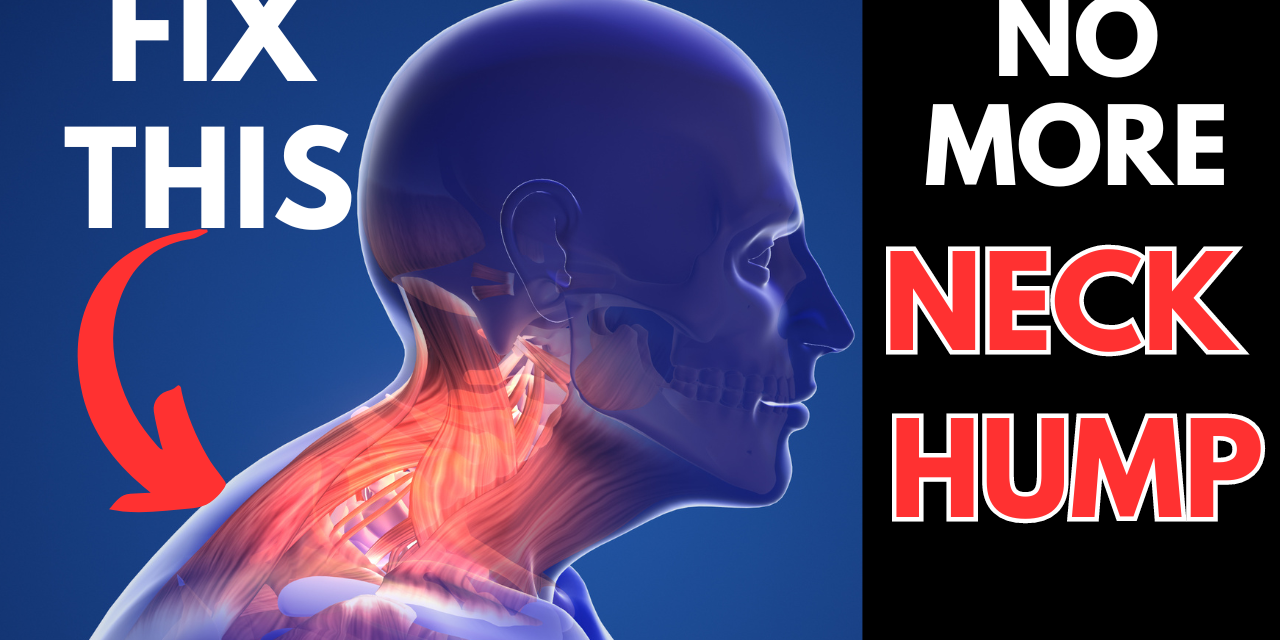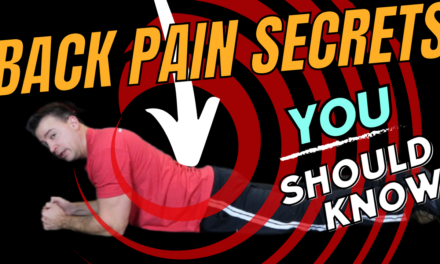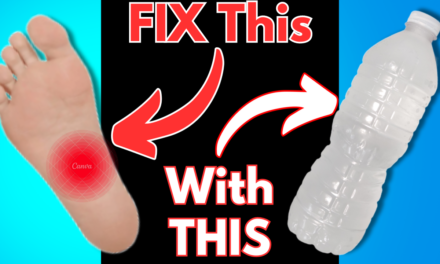How to Fix the Hump on the Back of Your Neck
Introduction
Have you noticed a hump forming on the back of your neck? This common issue, often called a dowager’s hump or buffalo hump, can be both physically uncomfortable and a source of self-consciousness. Many people develop this hump due to poor posture, but it can also stem from other health issues. If you’re struggling with this, don’t worry—there are effective ways to address and reduce it. As a chiropractic expert, I’m here to guide you through understanding, addressing, and fixing that neck hump.
Understanding the Neck Hump
What is a Neck Hump?
A neck hump is an abnormal curvature at the base of the neck where the cervical spine meets the thoracic spine. Medically, this condition can be referred to as kyphosis or hyperkyphosis. It’s typically characterized by a rounded hump and often accompanied by a forward head posture.
Common Symptoms
In addition to the visible hump, you might experience:
– Neck and upper back pain.
– Stiffness and reduced mobility in the neck.
– Headaches.
– Fatigue from maintaining poor posture.
The Connection Between Posture and Neck Hump
Poor posture, especially from activities like sitting at a desk all day or looking down at a phone, can significantly contribute to developing a neck hump. This forward head posture puts extra pressure on the cervical spine, leading to the curvature becoming more pronounced over time.
Common Causes of a Neck Hump
Poor Posture
Slouching and prolonged forward head positioning are the most common culprits. When you spend hours hunched over, your spine gradually adapts to this unhealthy posture.
Osteoporosis and Vertebral Fractures
Osteoporosis can weaken the bones in your spine, leading to fractures and a pronounced curvature.
Excessive Weight Gain
Carrying extra weight, particularly around the upper back and neck, can lead to fatty deposits that exacerbate the hump.
Genetic Predisposition
Sometimes, a neck hump can run in families. If your parents or grandparents had a similar issue, you might be more prone to developing one.
Hormonal Imbalances
Conditions like Cushing’s syndrome, which involves an overproduction of cortisol, can cause fat deposits to accumulate on the back of the neck.
Assessing Your Neck Hump
Self-Assessment Techniques
You can do a simple self-assessment at home:
1. Stand sideways in front of a mirror.
2. Look at the alignment of your ears and shoulders. If your head is jutting forward and there’s a noticeable bump at the base of your neck, you likely have a neck hump.
3. Feel the base of your neck. If there’s a rounded area that protrudes more than usual, it’s time to take action.
When to Seek Professional Help
If your neck hump is accompanied by severe pain, significant mobility issues, or other concerning symptoms, it’s essential to consult with a healthcare professional, such as a chiropractor, for a thorough evaluation.
Chiropractic Care and the Neck Hump
Chiropractic Diagnosis and Treatment
Chiropractors can diagnose the severity of your neck hump and create a personalized treatment plan. This often includes:
– **Spinal Adjustments:** Realigning the spine to reduce curvature and improve posture.
– **Soft Tissue Therapy:** Techniques like massage to relax tight muscles and improve blood flow.
– **Exercise Recommendations:** Specific exercises to strengthen the neck and upper back muscles.
Benefits of Chiropractic Care
Regular chiropractic visits can help:
– Alleviate pain and discomfort.
– Improve posture.
– Enhance mobility.
– Prevent further progression of the neck hump.
Exercises and Stretches to Reduce a Neck Hump
Importance of Exercise
Strengthening and stretching the muscles around your neck and upper back can significantly reduce the appearance of a neck hump and improve your posture.
Effective Exercises
Chin Tucks
1. Stand or sit up straight.
2. Pull your chin straight back, creating a “double chin” appearance.
3. Hold for 5-10 seconds and repeat 10 times.
Shoulder Blade Squeezes
1. Sit or stand with your arms by your sides.
2. Squeeze your shoulder blades together as if trying to hold a pencil between them.
3. Hold for 5 seconds and repeat 10 times.
Wall Angels
1. Stand with your back against a wall, arms raised in a “W” position.
2. Slowly slide your arms up to form a “Y” shape, keeping your elbows and wrists against the wall.
3. Return to the starting position and repeat 10 times.
Cat-Cow Stretches
1. Get on your hands and knees.
2. Arch your back (cow position) and then round it (cat position), moving slowly between each.
3. Repeat for 1-2 minutes.
Upper Back Foam Rolling
1. Lie on your back with a foam roller placed under your upper back.
2. Cross your arms over your chest and slowly roll up and down the upper back.
3. Do this for 1-2 minutes.
Posture Correction Techniques
Maintaining Proper Posture
Improving your posture can help prevent and reduce a neck hump:
– **Sit and Stand Tall:** Imagine a string pulling the top of your head towards the ceiling.
– **Keep Your Shoulders Back:** Avoid slouching by keeping your shoulders relaxed and back.
– **Align Your Ears and Shoulders:** Keep your ears directly above your shoulders to prevent forward head posture.
Ergonomic Adjustments
Make your workspace more ergonomic to support better posture:
– **Monitor Height:** Ensure your computer screen is at eye level.
– **Chair Support:** Use a chair that supports the natural curve of your spine.
– **Frequent Breaks:** Take breaks to stand, stretch, and move around every hour.
Supportive Devices
Consider using posture correctors or braces that gently pull your shoulders back to promote better alignment. These can be particularly helpful if you spend long hours sitting.
Lifestyle Changes to Support Neck Health
Maintaining a Healthy Weight
Keeping a healthy weight can reduce fatty deposits around the neck and improve overall health.
Nutritional Tips for Bone Health
Ensure you’re getting enough calcium and vitamin D to maintain strong bones. Foods like dairy products, leafy greens, and fortified cereals are excellent sources.
Stress Management
Stress can lead to muscle tension, contributing to poor posture. Incorporate stress-relief techniques like yoga, meditation, and deep breathing exercises into your routine.
Case Studies and Success Stories
Real-Life Examples
I’ve seen many patients make remarkable progress. Take Sarah, for instance. She had a noticeable neck hump and constant neck pain. Through a combination of chiropractic care, targeted exercises, and posture correction, Sarah’s hump reduced significantly, and her pain decreased.
Personal Anecdotes
Another patient, Mike, was skeptical about non-surgical treatments for his neck hump. After consistent chiropractic sessions and following a tailored exercise plan, he saw dramatic improvements. Not only did his neck hump diminish, but his overall posture improved, boosting his confidence.
Precautions and When to Seek Professional Help
Signs to Look Out For
If you experience severe pain, numbness, tingling, or significant mobility issues, it’s crucial to seek professional help. These could be signs of more serious underlying conditions.
Choosing a Qualified Chiropractor
Look for a licensed chiropractor with experience in treating postural issues and neck humps. During your consultation, discuss your symptoms and treatment goals to ensure they can provide the care you need.
Conclusion
A neck hump can be a source of discomfort and self-consciousness, but with the right strategies, it’s possible to reduce and even eliminate it. By understanding the causes, incorporating targeted exercises, improving your posture, and seeking chiropractic care, you can take significant steps towards a healthier, more aligned neck.
Call to Action
Are you ready to start addressing your neck hump? Share this article with friends and family who might benefit from these tips, and don’t hesitate to reach out for a consultation with a chiropractor. Together, we can work towards better neck and back health and improve your overall well-being. Let’s get started on the journey to a hump-free neck today!





